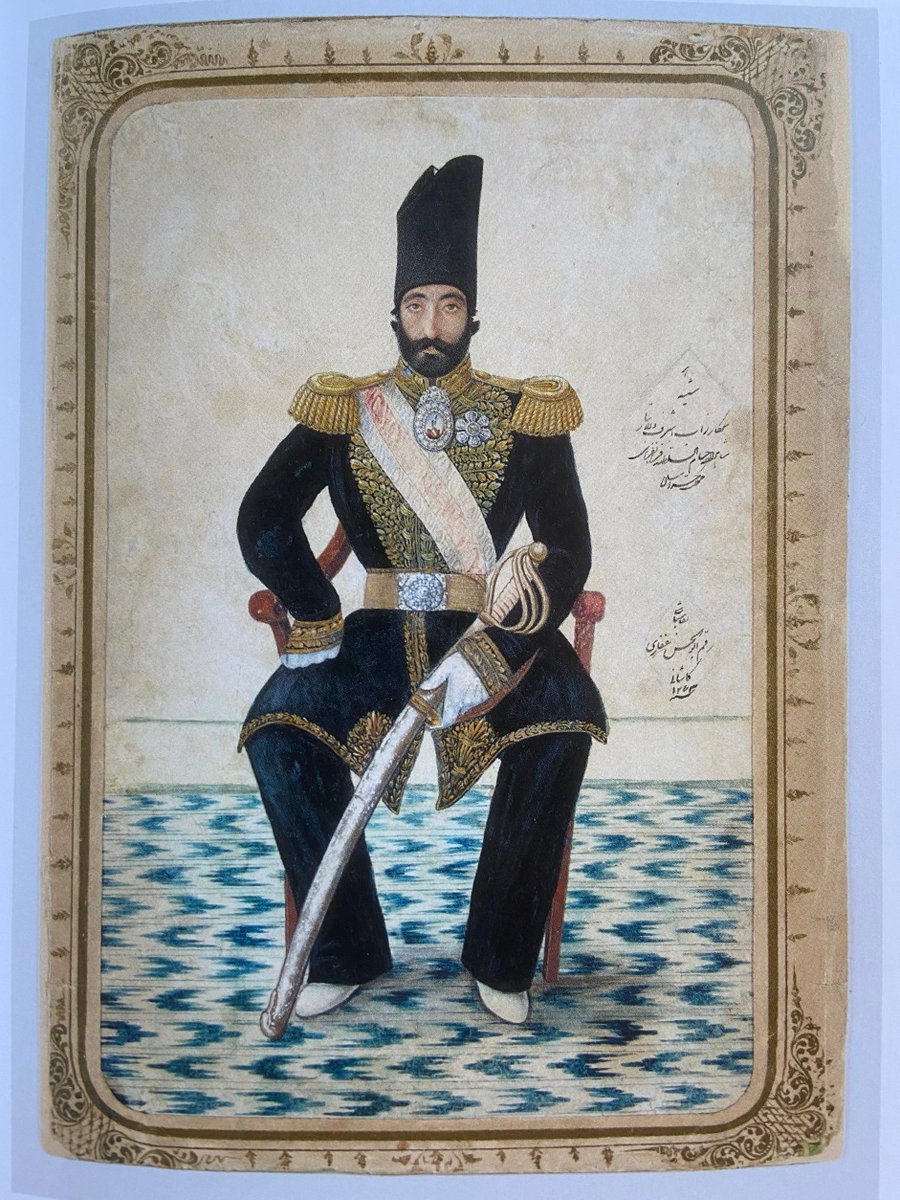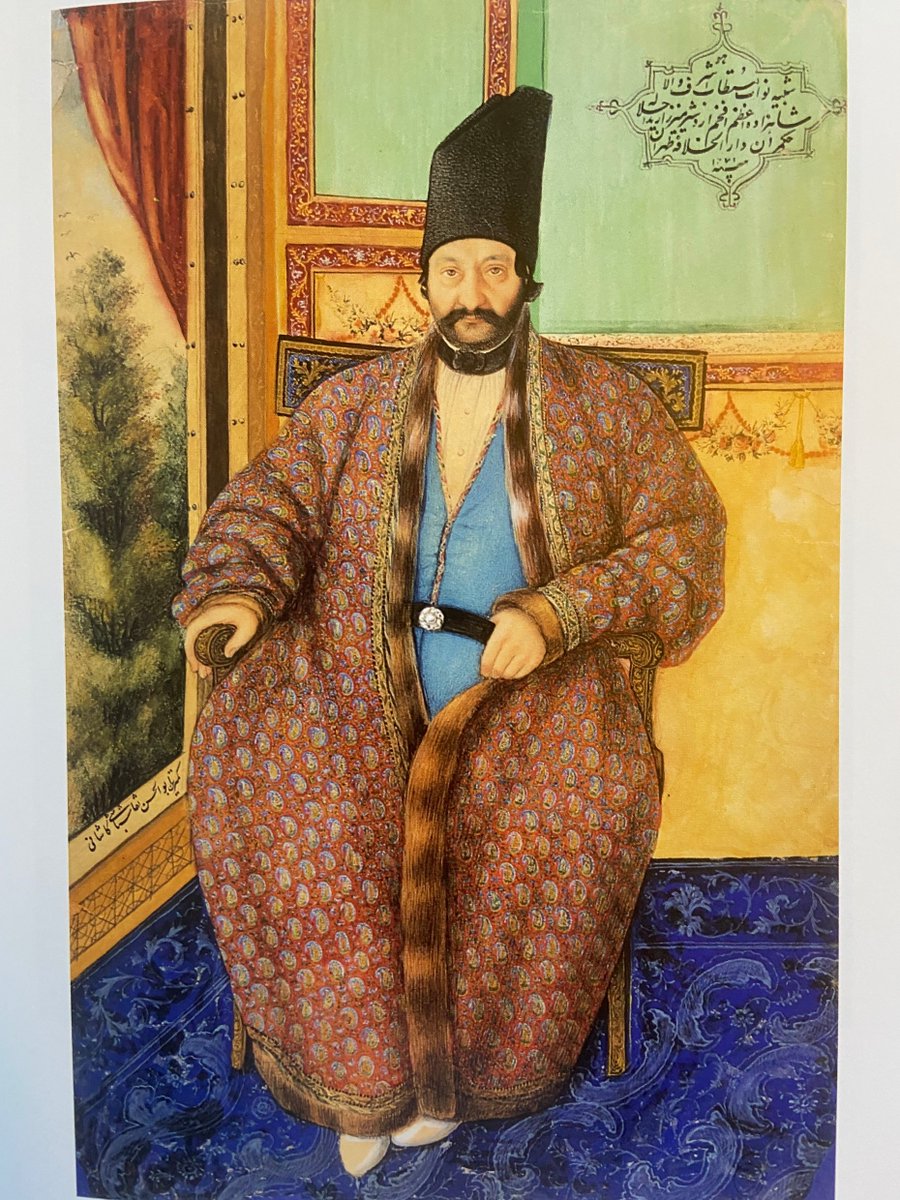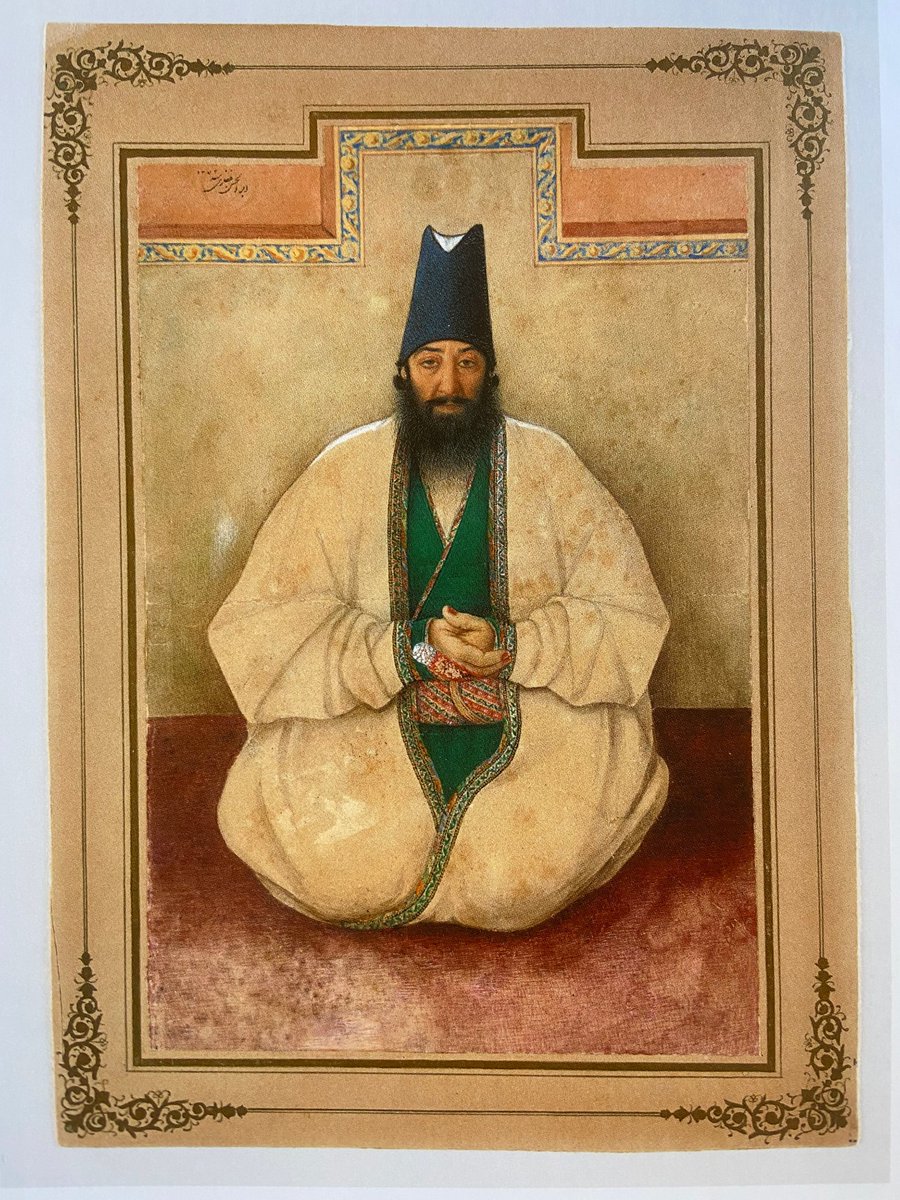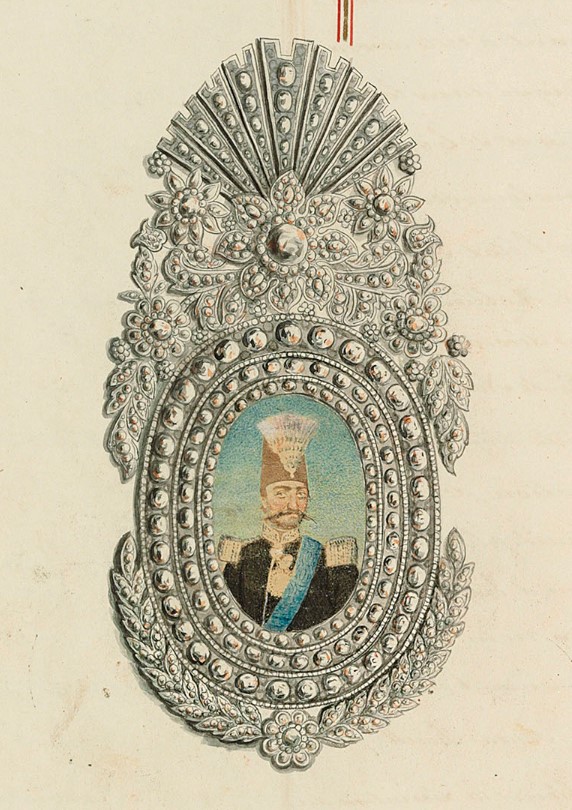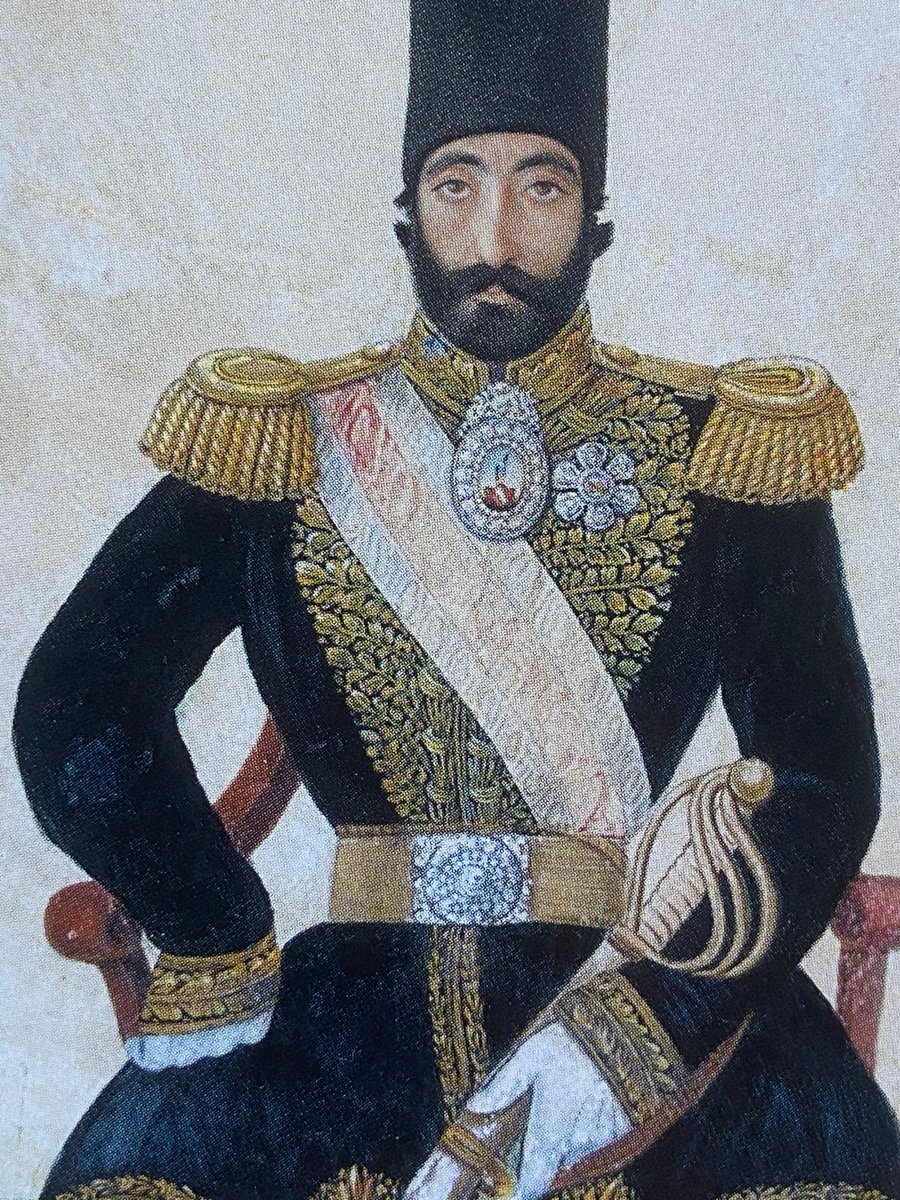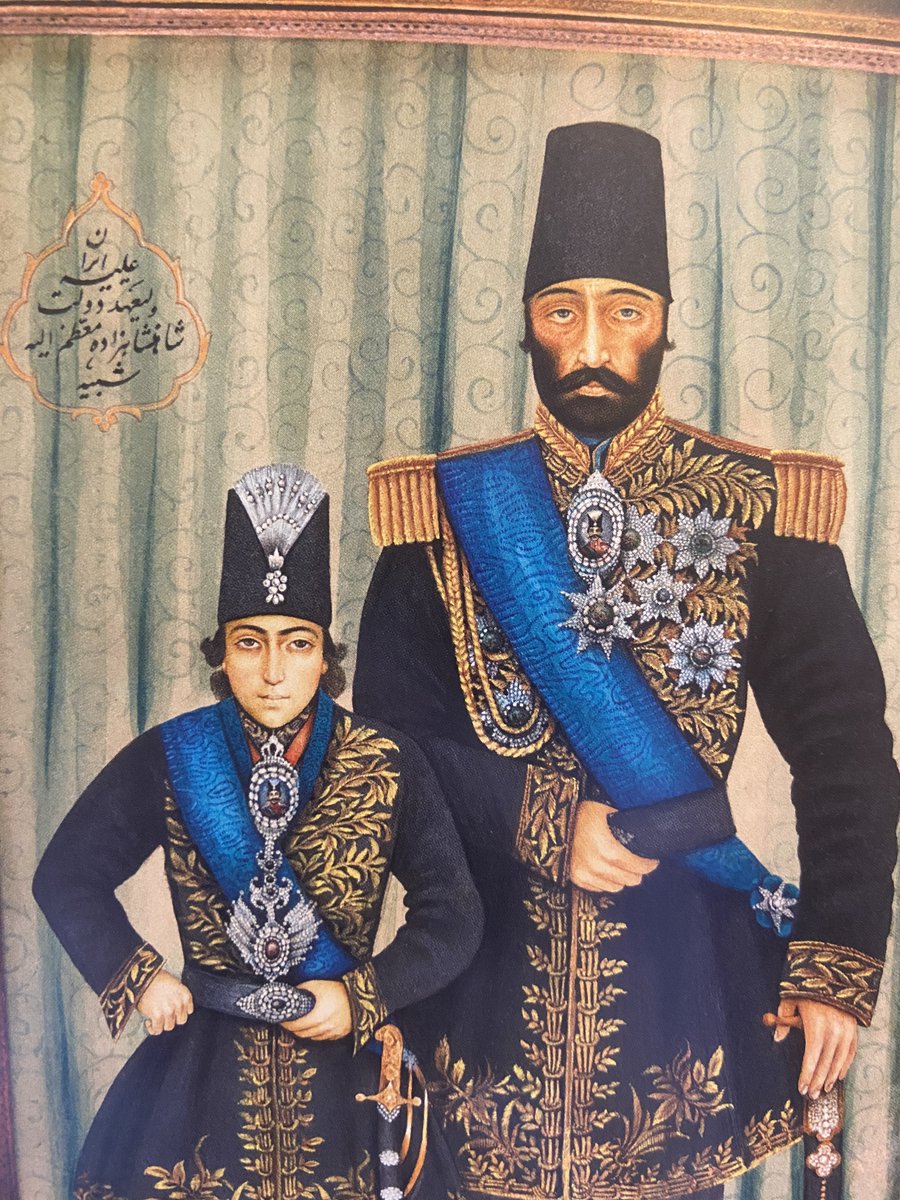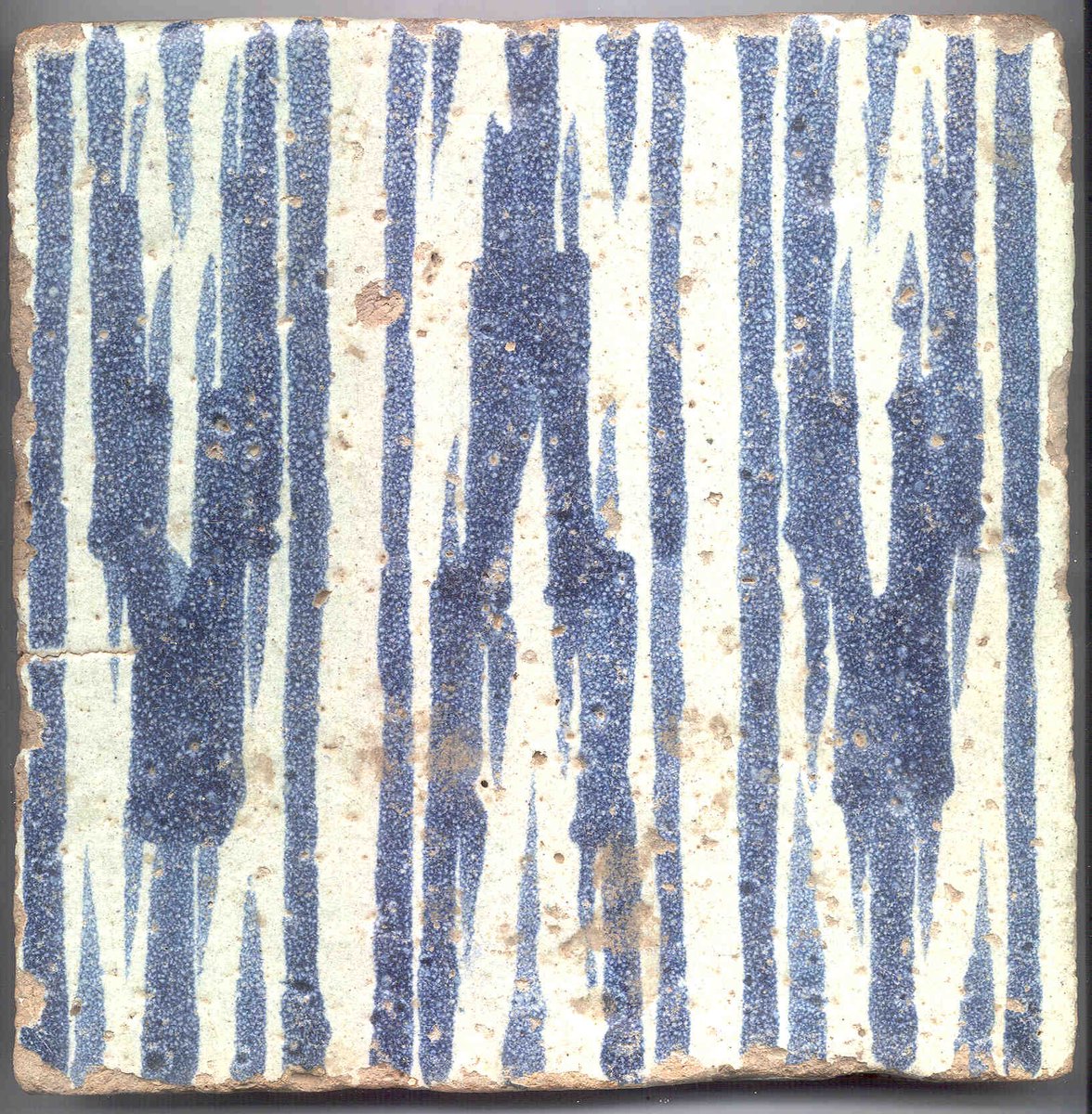Today, I& #39;ve been writing a bit on Sultan Murad Mirza Husam al-Saltana (1817-1883), a governor of Khurasan. There& #39;s a wonderful portrait of him, so I thought I& #39;d do a thread on some of the notable features of the painting to bring some Qajar style to your timeline this evening...
The artist is Abu& #39;l-Hasan Ghaffari (1814-66), & #39;naqqashbashi& #39; (head-painter) at Nasir al-Din Shah& #39;s court. He painted some of the most iconic works of the era. You might be thinking it all looks a bit staged - this is because he often painted from photos, rather than from life.
Husam al-Saltana was grandson of Fath ʿAli Shah. His father was ʿAbbas Mirza, Fath ʿAli& #39;s son & heir who predeceased him. Husam al-Saltana was a prominent figure at court during the reign of Nasir al-Din Shah - here he is wearing the Order of the Royal Image (timsal-i humayuni).
The rest of Husam al-Saltana& #39;s dress here is noticeably European in style. The gold braid epaulettes are a particular clue. This is following changes to military attire which became widespread during the reigns of Muhammad and Nasir al-Din Shah. (Muhammad Shah in the 3rd image).
The final thing I want to point out is the floor, with its ikat covering. This may well be an actual piece of ikat cloth. However, during this period, tiles were also made to give an ikat effect, through a different medium. More info here: http://collections.vam.ac.uk/item/O1264033/tehran-floor-tile-imitating-ikat-tile-unknown/">https://collections.vam.ac.uk/item/O126...

 Read on Twitter
Read on Twitter